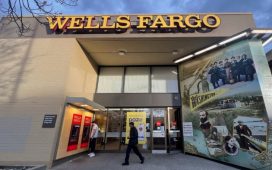For observers of mergers and acquisitions, when the prices of the protagonists fall together, it means that the market has serious doubts about the success of the operation. So it was with Credit Suisse after its rescue by UBS over the weekend. Initially both stocks saw share price falls – Credit Suisse’s made sense to investors because of the deep discount of 59% implied in the deal.
At the end of Monday’s trading, however, Credit Suisse ended the session down 55.9%, but UBS posted a gain of 1.3%.
What explains this turnaround?
The plunge in the price of the two Swiss banks reflected the deep concern of investors regarding the treatment of bondholders, which came off much worse than that of Credit Suisse shareholders.
CoCos Challenged
The Swiss authorities have de facto imposed the annihilation of contingent convertible bonds (“CoCos” or “AT1” bonds), financial instruments which are intended to strengthen banks’ equity while offering a relatively attractive return.
But these are bonds that in theory rank above stocks in the event of bankruptcy.
In other words, when a bank goes bankrupt, it is the shareholders who lose their shirt first, then the bondholders, but the latter have in principle mechanisms that allow them to recover part of their investment (through cash compensation or a conversion into securities, for example).
As part of the UBS bailout, the normal order of things was deliberately turned upside down, as bondholders were left stark naked, while shareholders were offered an unexpected way out.
The shockwave on the markets was felt keenly across European banking stocks and has caused an intense debate over the use of CoCos, a market worth more than 200 million euros.
This decision has also forced the European Central Bank and the Bank of England to provide clarification.
“The UK bank resolution framework has a clear statutory order in which shareholders and creditors would bear losses in a resolution or insolvency scenario… AT1 instruments are senior to CET1 and secondary to T2 in the hierarchy,” the Bank of England said in a press release.
These announcements partly reassured investors, explaining the late rebound of markets in Europe (and of UBS) during Monday’s session – and into Tuesday.
Who Pays?
The damage is nevertheless done.
For JPMorgan analysts, “decisions over the weekend to erase AT1s while valuing equity at 3 billion Swiss francs could lead to a contagion effect on funding costs. (…) Overall, we anticipate a higher cost of equity for the [banking] sector.”
Remember that the objective of a rescue is to limit the damage, not to amplify it.
Even if the abnormal treatment of shareholders and bondholders seems confined to Switzerland, which is not part of the Eurozone, the shockwave has already been felt.
The consequences of this unfortunate decision are still difficult to assess, but they will certainly not reduce the uncertainty that is currently fuelling financial market volatility.










